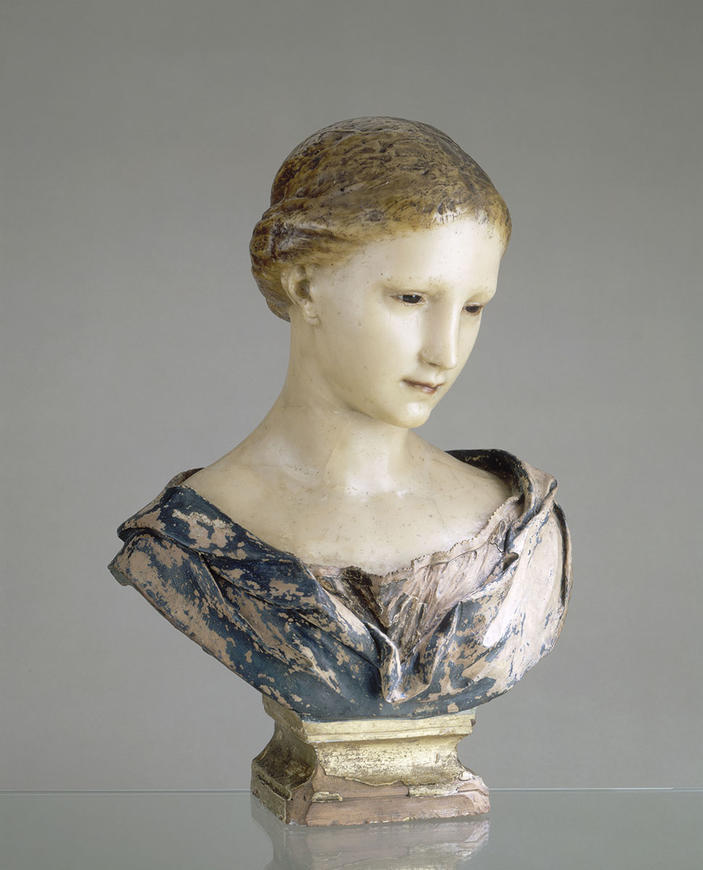A young women with a diaphanous complexion, her gaze lost in the void. We present Wax Head, whose beauty and melancholy have enchanted thousands of visitors. Formerly the undisputed darling of the museum's collections, people now tend to prefer works by Donatello, Rubens or Goya. But a few decades ago, this young lady occupied a special place in the landscape of the museum. For a long time she was displayed in a golden niche, placed in the middle of a crafted wooden aedicula, like a religious statue in a Greek temple.
Several theories have been put forward as to her origin, but there is no definitive proof to confirm any of them. While she is now thought to have been sculpted in the 17th or 18th century, some researchers have attributed her to an Italian Renaissance sculptor. The names of Domenico del Barbiere, a Florentine sculptor, and Orsino Benintendi, a 15th-century wax sculptor, have been suggested.
It has even been said that the impression of this face was taken from a dead woman found in Rome in 1485. What is certain, however, is the reference to Renaissance Italy, regarded by artists as an ideal of perfection.
Her beauty has even inspired songs, novels and poems, like that of Géry Legrand, Mayor of Lille from 1881 to 1896: "In this splendid likeness / A masterpiece of an incomplete fashion / I see that ancient genius / Casts a perfect reflection".
(Ref. Pl.1)

A young women with a diaphanous complexion, her gaze lost in the void. We present Wax Head, whose beauty and melancholy have enchanted thousands of visitors. Formerly the undisputed darling of the museum's collections, people now tend to prefer works by Donatello, Rubens or Goya. But a few decades ago, this young lady occupied a special place in the landscape of the museum. For a long time she was displayed in a golden niche, placed in the middle of a crafted wooden aedicula, like a religious statue in a Greek temple.
Several theories have been put forward as to her origin, but there is no definitive proof to confirm any of them. While she is now thought to have been sculpted in the 17th or 18th century, some researchers have attributed her to an Italian Renaissance sculptor. The names of Domenico del Barbiere, a Florentine sculptor, and Orsino Benintendi, a 15th-century wax sculptor, have been suggested.
It has even been said that the impression of this face was taken from a dead woman found in Rome in 1485. What is certain, however, is the reference to Renaissance Italy, regarded by artists as an ideal of perfection.
Her beauty has even inspired songs, novels and poems, like that of Géry Legrand, Mayor of Lille from 1881 to 1896: "In this splendid likeness / A masterpiece of an incomplete fashion / I see that ancient genius / Casts a perfect reflection".
(Ref. Pl.1)